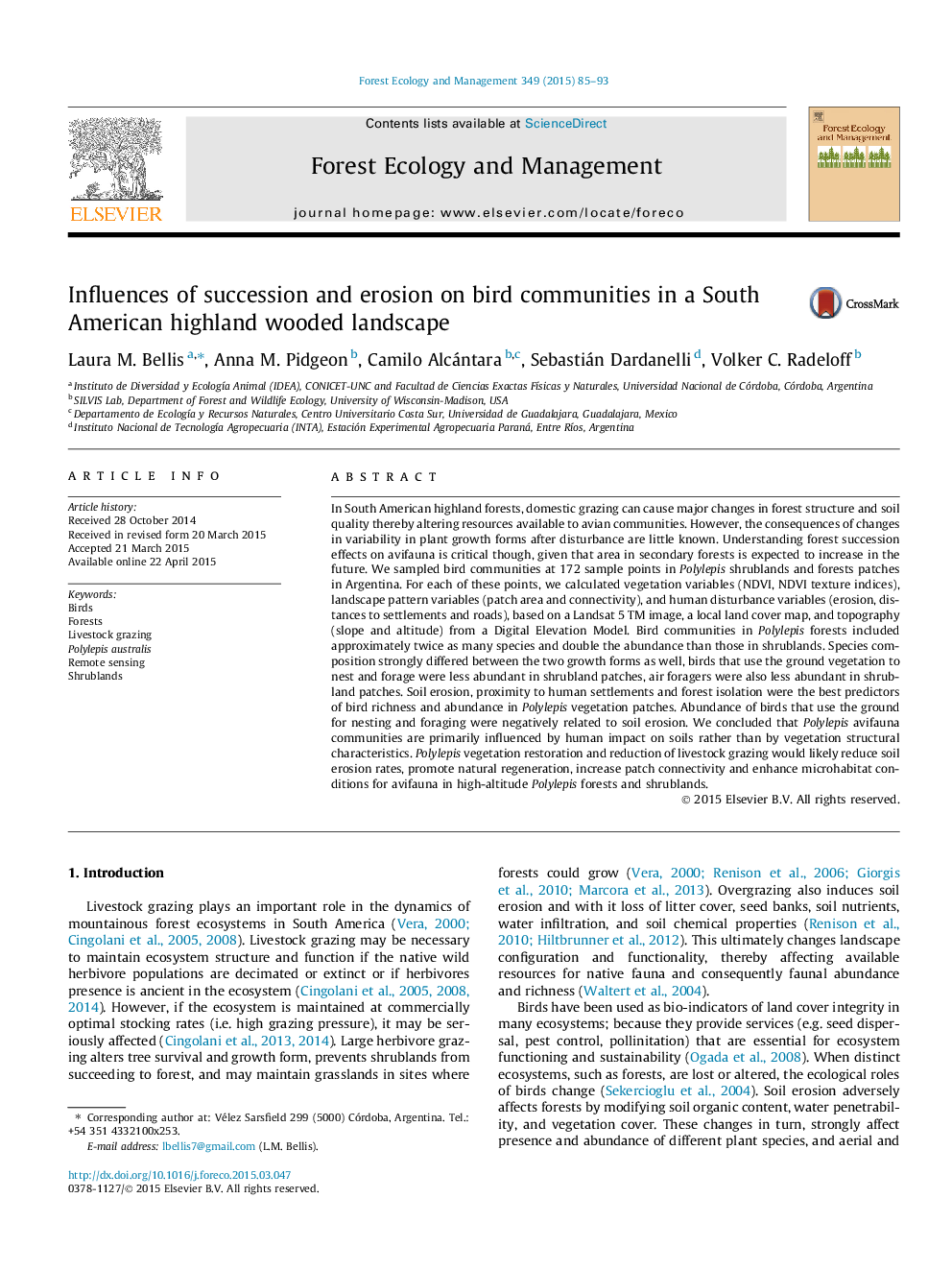| کد مقاله | کد نشریه | سال انتشار | مقاله انگلیسی | نسخه تمام متن |
|---|---|---|---|---|
| 86274 | 159175 | 2015 | 9 صفحه PDF | دانلود رایگان |
• Forests had higher complexity, patch connectivity and less erosion than shrublands.
• Avifauna in forests showed approximately twice species richness and abundance.
• Only 34.5% of birds (10 species) were shared in both communities.
• Erosion, houses nearness and forest isolation were the best predictors of bird loss.
In South American highland forests, domestic grazing can cause major changes in forest structure and soil quality thereby altering resources available to avian communities. However, the consequences of changes in variability in plant growth forms after disturbance are little known. Understanding forest succession effects on avifauna is critical though, given that area in secondary forests is expected to increase in the future. We sampled bird communities at 172 sample points in Polylepis shrublands and forests patches in Argentina. For each of these points, we calculated vegetation variables (NDVI, NDVI texture indices), landscape pattern variables (patch area and connectivity), and human disturbance variables (erosion, distances to settlements and roads), based on a Landsat 5 TM image, a local land cover map, and topography (slope and altitude) from a Digital Elevation Model. Bird communities in Polylepis forests included approximately twice as many species and double the abundance than those in shrublands. Species composition strongly differed between the two growth forms as well, birds that use the ground vegetation to nest and forage were less abundant in shrubland patches, air foragers were also less abundant in shrubland patches. Soil erosion, proximity to human settlements and forest isolation were the best predictors of bird richness and abundance in Polylepis vegetation patches. Abundance of birds that use the ground for nesting and foraging were negatively related to soil erosion. We concluded that Polylepis avifauna communities are primarily influenced by human impact on soils rather than by vegetation structural characteristics. Polylepis vegetation restoration and reduction of livestock grazing would likely reduce soil erosion rates, promote natural regeneration, increase patch connectivity and enhance microhabitat conditions for avifauna in high-altitude Polylepis forests and shrublands.
Journal: Forest Ecology and Management - Volume 349, 1 August 2015, Pages 85–93
